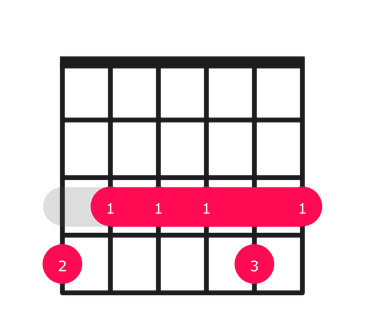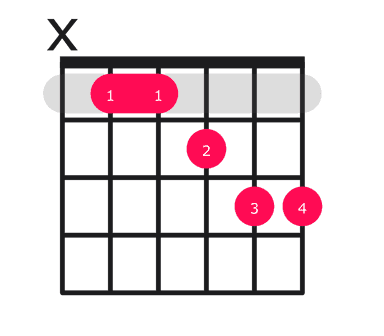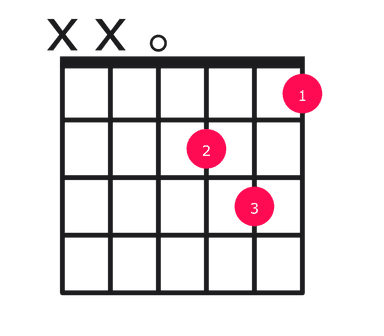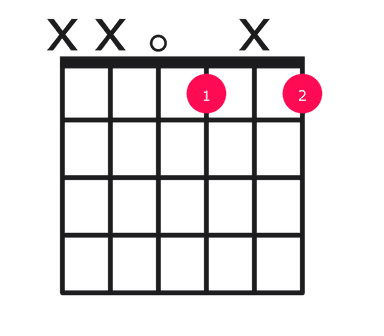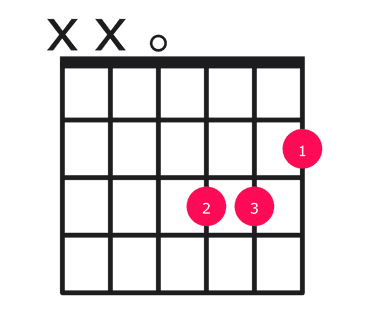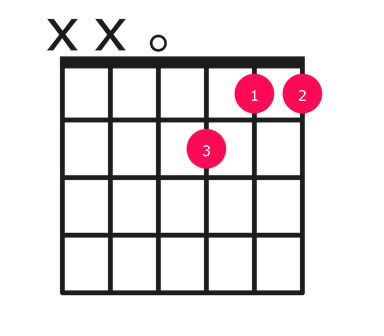How to play the Dmaj13 chord on guitar
Spice up your playing with this jazzy chord, as heard in "Wonderwall" and "Sultans of Swing."
The Dmaj13 chord
The Dmaj13 chord, pronounced "D major thirteenth," is a sophisticated and jazzy variation of the standard D major chord. This extended chord adds colorful tones, including the 7th, 9th, 11th, and 13th, creating a rich and complex harmony. Commonly used in jazz, funk, and R&B, the Dmaj13 can add a touch of elegance and intrigue to any musical arrangement.
There are many ways to play a chord. Here's a diagram for the most common Dmaj13 chord. We've also included other versions below.
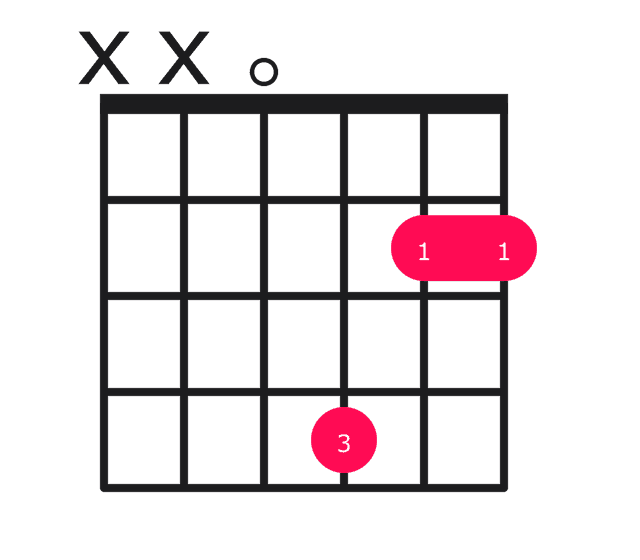
Unlock your playing potential in online guitar lessons with experts on Til. Start today and achieve your guitar goals quickly. Find a top-rated teacher.
Finger placement for Dmaj13 chord
The most common way to play the Dmaj13 chord on guitar is as a barre chord on the 10th fret.
Follow these finger positions to play a Dmaj13 chord on your guitar:
- Place your index finger across all six strings at the 10th fret to form a barre chord.
- Place your middle finger on the 12th fret of the 2nd (B) string.
- Place your ring finger on the 12th fret of the 4th (D) string.
- Place your pinky finger on the 12th fret of the 1st (high E) string.
Strum all six strings together to play the Dmaj13 chord. Make sure to apply enough pressure with your index finger to properly fret all the strings in the barre chord.
How to play an easy Dmaj13 chord on guitar
If you're a beginner looking to play a simpler version of the Dmaj13 chord, try this:
- Place your index finger on the 2nd fret of the 1st (high E) string.
- Place your middle finger on the 2nd fret of the 2nd (B) string.
- Place your ring finger on the 3rd fret of the 3rd (G) string.
- Strum the top three strings.
How to play a Dmaj13 bar chord
The Dmaj13 chord is most commonly played in an open position, but learning the barre chord version can be useful for situations where you need to quickly transition between chords or want a brighter, more complex sound.
Here's how to play a Dmaj13 barre chord:
- Barre your index finger across the 10th fret, covering all six strings.
- Place your middle finger on the 11th fret of the 2nd (B) string.
- Place your ring finger on the 12th fret of the 4th (D) string.
- Place your pinky finger on the 12th fret of the 3rd (G) string.
- Strum from the 5th (A) string down to the 1st (high E) string.
Common Dmaj13 chord progressions
The Dmaj13 chord brings a lush, jazzy flavor to progressions, often evoking a dreamy or wistful emotional atmosphere. Here are some common chord progressions featuring the Dmaj13 chord:
- I - V7sus4 - Imaj7 - IV6 (Dmaj13 - A7sus4 - Dmaj7 - G6)
- ii - V7 - Imaj7 - IVmaj7 (Em7 - A7 - Dmaj13 - Gmaj7)
- iii - vi - ii - V7 (F#m7 - Bm7 - Em7 - A7sus4 - Dmaj13) Used in "Still Crazy After All These Years" by Paul Simon
- ii7 - V7#9 - Imaj7 - VIm7 (Em7 - A7#9 - Dmaj13 - Bm7)
- vi - V7sus4 - Imaj9 - IV6 (Bm7 - A7sus4 - Dmaj13 - G6) Used in "Autumn Leaves" and "Misty"
Drills to master the Dmaj13 chord
To master the Dmaj13 chord, try playing each note individually, focusing on clarity and tone. Once comfortable, play the notes in pairs, such as D-F#, A-C#, and E-B. Practice transitioning between these pairs smoothly.
Another drill is to arpeggiate the chord, playing each note in sequence from lowest to highest and back down. Start slowly and gradually increase speed while maintaining accuracy. This exercise helps develop finger independence and muscle memory, making the Dmaj13 shape more natural and comfortable to play.
Unlock your playing potential in online guitar lessons with experts on Til. Start today and achieve your guitar goals quickly. Find a top-rated teacher.
Marty W.
"Jamey is a great musician and is sincere in his desire to thoroughly teach the subject at hand. He provided detailed handouts and playing examples, and really went above and beyond my expectations. Highly recommended!"
Songs that feature the Dmaj13 chord
Here are 10 popular songs you can play with the Dmaj13 chord:
- Isn't She Lovely by Stevie Wonder (Dmaj13, E13, Gmaj7, Dmaj7, Bm7, Fm7, Em7, A7)
- Sir Duke by Stevie Wonder (Dmaj13, Cmaj13, Gmaj13, A13, Fmaj13, Cmaj13, Gmaj13, A13)
- Stairway to Heaven by Led Zeppelin (Am, Amaj7, Am7, Dsus4, D, Dm, Dmaj13, Dsus2, Dsus4)
- Hotel California by Eagles (Bm, F#, A, E, G, D, Em, F#7, Dmaj13)
- Wonderwall by Oasis (Em7, G, Dmaj13, A7sus4, Cadd9)
- Sunny by Bobby Hebb (Am7, D7, Gmaj7, Cmaj7, F#m7b5, B7b9, Em7, A7, Dmaj13, G7, E7#9)
- Harvest Moon by Neil Young (Dmaj13, Em7, A7, Gmaj7, D, A)
- Free Fallin' by Tom Petty (D, Dmaj13, G, G6, Asus4, A)
- You've Got a Friend by Carole King (Dmaj13, G6, Asus4, A, Bm7, Em7, Dmaj13, A, G)
- If I Ain't Got You by Alicia Keys (Dmaj13, Bm7, Em7, A13, Gmaj7)
How a guitar teacher can help
If you feel stuck in your playing, it might help to take personalized guitar lessons with an expert guitarist. Taking lessons with a pro gives you access to the skills, feedback, and motivation to reach your goals.
You can find expert guitar teachers to support you in the journey. Thousands of people have turned to online guitar lessons on Til, instead of traditional in-person lessons, because Til gives you access to the best teachers in the world from the comfort of home. And with flexible scheduling, secure payments, lesson recordings, and a private chat with your teacher–there’s never been a better way to learn guitar.







